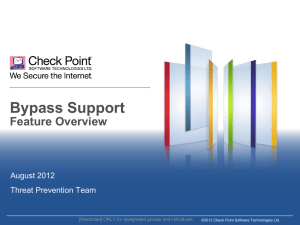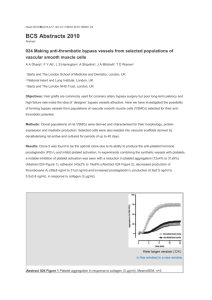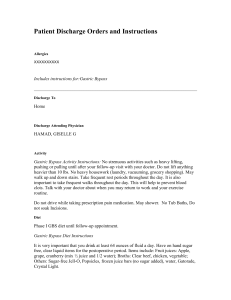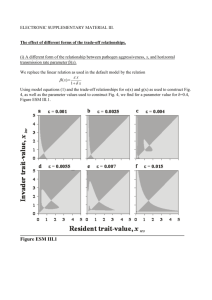Smartcool ECO3/ESM Screen Data Savings
advertisement
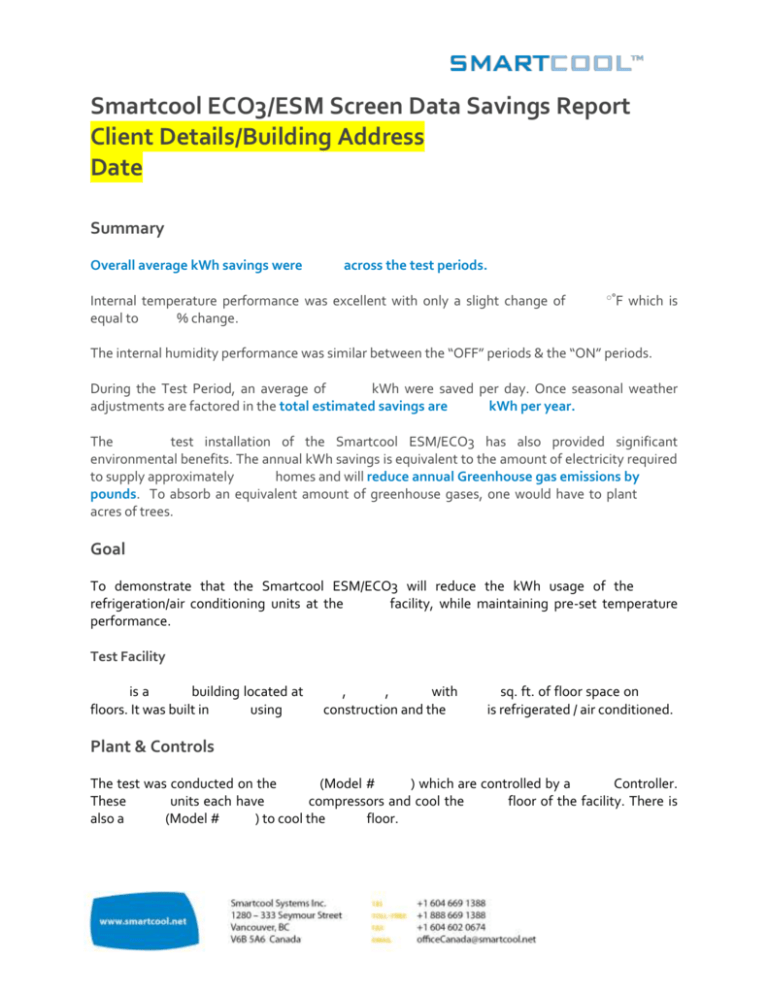
Smartcool ECO3/ESM Screen Data Savings Report Client Details/Building Address Date Summary Overall average kWh savings were across the test periods. Internal temperature performance was excellent with only a slight change of equal to % change. ○°F which is The internal humidity performance was similar between the “OFF” periods & the “ON” periods. During the Test Period, an average of kWh were saved per day. Once seasonal weather adjustments are factored in the total estimated savings are kWh per year. The test installation of the Smartcool ESM/ECO3 has also provided significant environmental benefits. The annual kWh savings is equivalent to the amount of electricity required to supply approximately homes and will reduce annual Greenhouse gas emissions by pounds. To absorb an equivalent amount of greenhouse gases, one would have to plant acres of trees. Goal To demonstrate that the Smartcool ESM/ECO3 will reduce the kWh usage of the refrigeration/air conditioning units at the facility, while maintaining pre-set temperature performance. Test Facility is a building located at floors. It was built in using , , with construction and the sq. ft. of floor space on is refrigerated / air conditioned. Plant & Controls The test was conducted on the (Model # ) which are controlled by a Controller. These units each have compressors and cool the floor of the facility. There is also a (Model # ) to cool the floor. Test Methodology Smartcool’s M&V testing methodology follows Option B (Retrofit Isolation) of the International Performance Measurement & Verification Protocol (IPMVP), where the savings of a single Energy Conservation Measure (ECM) is calculated over a short period. The testing is performed using a week OFF/week ON strategy, which will provide the most even comparison by monitoring the site’s weekly operating conditions over the OFF and ON test periods (shown in the Proposed Test Period table below). The installation and the switching of the Smartcool’s technology from RUN (ON) to BYPASS (OFF) and the data collections will be conducted by qualified personnel. The M&V test will commence once Smartcool’s Lead Engineer is satisfied with the operation of the air conditioning / refrigeration systems and Smartcool’s technology. For more information on M&V testing best practices please refer to “A Best Practice Guide to Measurement and Verification of Energy Savings” produced by the Australasian Energy Performance Contracting Association (http://www.eec.org.au/Best%20Practice%20Guides). M&V Test Requirements It is critical to the success of the M&V test that the operating conditions of the equipment to be tested are similar over the OFF and ON test periods so that an accurate comparison can be made. Any unusual issues observed during the test that could have any impact on the heat load or energy consumption (irregular trading/operating patterns, maintenance, power outage, fire, etc.) must be reported to the Project Manager for further review. Additional weeks of testing may be added as required, based on the initial review of the data and type of issue observed during the test. All settings, including thermostat control, must be ‘locked down’ and remain consistent throughout the entire test period. If there is volatility in the energy consumption of the air conditioning / refrigeration units, Smartcool may request another test site or an extension of the test may be required. Data Explanation Required Measurements Compressor Run, Bypass and Override hours before and after ECM retrofit Outside ambient air temperature before and after ECM retrofit Outside Air Temperature Monitoring of outdoor temperature will be performed using the nearest suitable weather station listed on the http://www.wunderground.com/ on-line tool. Data Collections The ESM/ECO3 Run, Save, Bypass and Override hours, along with the unit’s set point, must be recorded with the date and time on the Site Report at the same time of day each week (as per the 2 Proposed Test Period table below). While in a 7 Day Bypass, the ESM/ECO3 will countdown from 168 hours and will automatically come out of Bypass after 7 days to begin saving. Any issues with the equipment should be determined at this time and recorded on the Site Report. It is imperative that the readings are taken at the same time of day each week as the start of the test. When putting the ESM/ECO3 into Bypass at the beginning of Week 1, the ESM/ECO3 screen must show “168”, which verifies that the ESM/ECO3 is in a 7 Day Bypass. When collecting the data at the end of Week 1, a full week (168 hours) must have passed since the unit was placed into Bypass and it should be verified that the ESM/ECO3 has come out of Bypass. In the event that additional testing is required after the end of Week 2, the ESM/ECO3 should be put back into a 7 Day Bypass. Required Steps 1. Installation of Smartcool’s technology Install Smartcool’s technology as per Smartcool’s Proposal. Ensure the air conditioning/refrigeration units are working properly with no maintenance scheduled during the test. 2. Full Test – 2 weeks duration1 After the installation is complete, and Smartcool’s Lead Engineer is satisfied with the operation of the system, the test will begin. The test will run for a two week period, with Smartcool’s technology automatically switching from Bypass mode (OFF) to Run mode (ON) to after the completion of Week 1. While in Bypass, Smartcool’s technology will have no effect on the operation of the air conditioning / refrigeration systems. Proposed Test Period TASK Data Collection or Clear Screen Hours/Put ESM/ECO3 into 7 day Bypass/Record Time & Set Point 1 Week Test OFF Data Collection 1 Week Test ON Data Collection/Put ESM/ECO3 into 7 day Bypass 1 Week Test OFF – IF REQUIRED Data Collection – IF REQUIRED 1 Week Test ON – IF REQUIRED Data Collection – IF REQUIRED 1 Subject PERIOD Day 1 Day 1-7 Day 7 Day 7 – 14 Day 14 TIME/DATE Ex. 1:00pm Ex. 1:00pm Ex. 1:00pm Day 14 – 21 Day 21 Ex. 1:00pm Day 21 – 28 Day 28 Ex. 1:00pm to no significant variations in the weather or other operational variables during the off and on test periods. 3 Proof of Savings At the conclusion of the M&V test a comparison of the ambient temperature and ESM/ECO3 screen data, showing the compressor Run, Manual Bypass and Automatic Override hours, will be created. The report will provide details of any financial and environmental benefits and outline the cost effectiveness of the installation of Smartcool’s technology. During the first week, the actual run time of the compressors will be accumulated as Manual Bypass hours (these only accumulate when the compressor is actually being called for). During the second week, the Run hours of the compressors are accumulated in Run and Automatic Override hours. By comparing the total run hours each week, the savings can be determined as follows: Week 1 Week 2 Run Hours 0 33 Manual Bypass Hours 40 40 Automatic Override Hours 0 1 Therefore during Week 1 of Manual Bypass (OFF), the compressor run time was 40 hours and during Week 2 (ON), the compressor run time was 34 hours (Run hours + Automatic Override hours). By dividing the compressor run time from Week 2 (34 hours) by the compressor run time from Week 1 (40 hours), the result is 15% savings. It is extremely important that the conditions during the test are similar between the two weeks so as to ensure an accurate comparison. To estimate the kWh consumption of the air conditioning / refrigeration units from the ESM/ECO3 screen data, you must first convert single phase to three phase where required. This is done by multiplying the RLA by 1.732. The three phase RLA is then multiplied by the voltage and power factor to determine the Watts, which are divided by 1000 to produce the kW rating. The kW rating is then multiplied by the Run, Automatic Override and Manual Bypass hours to determine the kWh used by the system. The difference between the Run + Automatic Override kWh and the Manual Bypass kWh is equal to the savings over even test periods. Alternatively, a power meter can be used to record the kW demand for each compressor. For a dual channel, be sure to use the kW for each compressor. The M&V test will be considered successful if the projected kWh reduction, based on the test data, is within 10% of the stated estimate in the Proposal. The success of this test will be independent of subsequent testing or rebate applications with any other third party. 4




